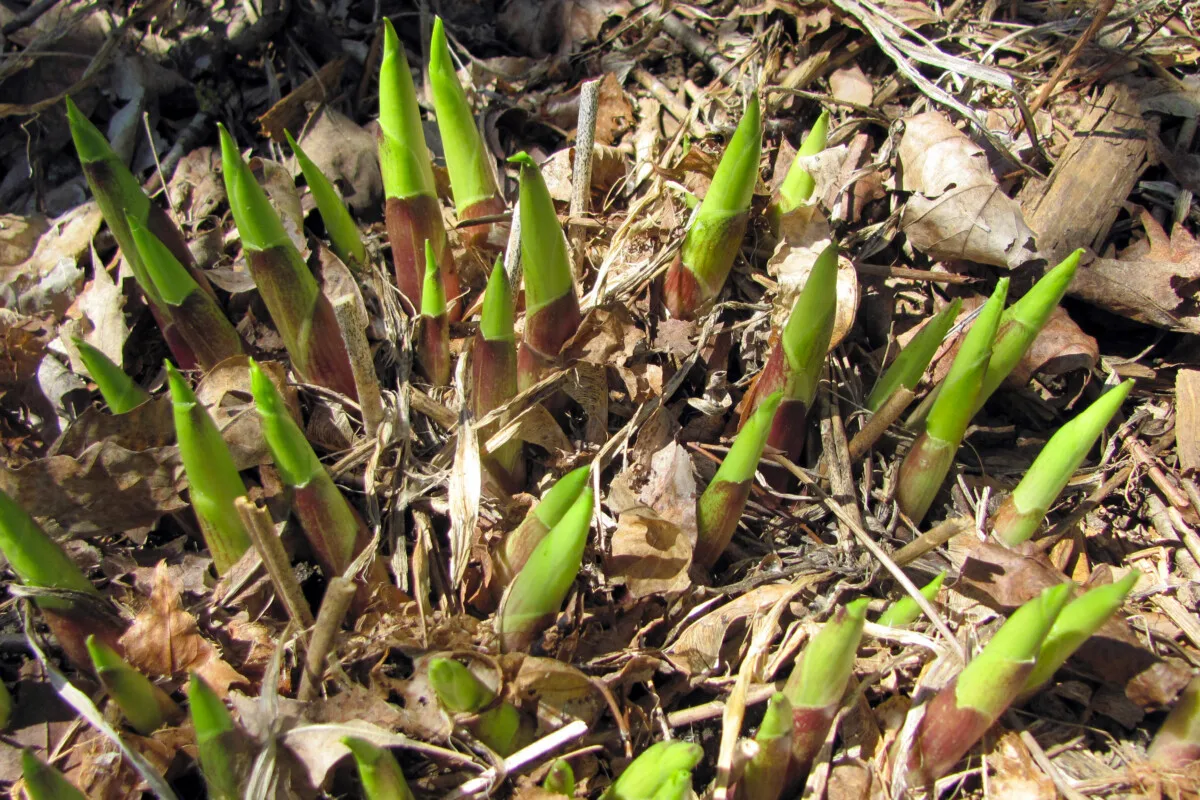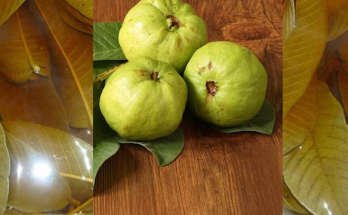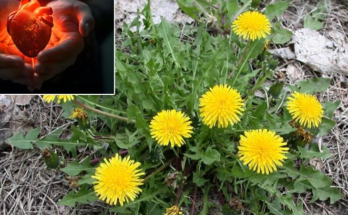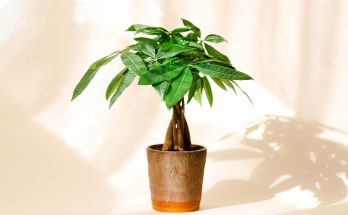Spring has arrived in my little corner of the world, and it’s my absolute favorite season. The air is still fresh and cool, the birds are singing their little hearts out, and the rejuvenating rains are waking up much life in the garden.
Every stroll I take around my yard brings with it new tidings of joy – hosta spears poking up through the mulch, rhododendron and serviceberry just days away from full bloom, and the always delightful surprise of discovering forgotten plantings.

Our perennials are usually the first to arise after their winter slumber. Like the true stalwarts of the garden, they bring a sense of permanence and repetition. We can depend on them to return year after year, and they become an indelible part of our seasonal rhythms.
Perennials are reliable returners, growing their ranks each year by producing offsets and seedlings.
Though individual plants won’t live forever, the perennial habit is to always have several generations of new plants scattered about. So when the time comes for the parent plant to disappear, there is rarely a barren patch left behind in your garden.
Compared to annuals, herbaceous perennials have an extended lifespan. But for how long can we count on them to reappear?
‘Lasting the Year Through’

From the Latin perennis – which means ‘lasting the year through’ – perennials are broadly defined as plants with a lifespan that extends past their first growing season.
Annuals complete their life cycle within one year, from seed to flower to seed, before dying back completely.
To be a perennial, on the other hand, a plant must have at least one meristem, an indeterminate type of plant tissue that gives rise to new organs and tissues beyond the one-year mark.
Some herbaceous perennials return for only three years before they fade away, while others can endure for a hundred years or more.
Short-Lived Perennials Live Just 3 to 5 Years

Returning for a few years, short-lived perennials have a fast and intense life strategy. These kinds of perennials prioritize rapid growth and seed production, but it comes at the cost of longevity.
Some common short-lived perennials:
- Columbine (Aquilegia)
- Delphinium (Delphinium)
- Dianthus (Dianthus)
- Blanket Flower (Gaillardia)
- Coral Bells (Heuchera)
- Shasta Daisy (Leucanthemum)
- Perennial Flax (Linum perenne)
- Lupine (Lupinus)
- Iceland Poppy (Papaver nudicaule)
Growing and colonizing areas quickly, short-lived perennials are excellent for filling in the bare spots of your garden posthaste.
They thrive for anywhere between 3 to 5 (and sometimes up to 10) years, but will eventually decline, flowering and pushing out new growth less and less, then fading away. As they allocate their resources toward reproduction, little is left for defensive mechanisms. This trade-off makes them more prone to drought and disease, further shortening their lifespans.

Even though their time here is limited, short-lived perennials make the best of it by re-seeding themselves every growing season. So although the parent plant will die back one day, its progeny will sprout up around them as a natural form of succession planning. Once a short-lived perennial is established, many descendants will be brought to bear in the years ahead.
Long-Lived Perennials Return for 10 to 100+ Years
Long-lived perennials have the exact opposite life strategy: slow and steady. Rather than allocating resources toward quick growth and seeds, these perennials invest in long-term survival and maintenance and have an extended juvenile-to-maturity transition.
The mechanisms behind their remarkably long lifespan allow them to survive drought, diseases, extreme temperatures, and other unfavorable growing conditions. Instead of pre-determined growth, they respond to environmental cues which greatly influence their growth patterns.
Some long-lived perennials conserve energy with periods of dormancy. Many have underground organs, like rhizomes or tubers, to store water, nutrients, and carbohydrates to draw from the following season.
They expend energy more efficiently and keep some in reserve so they can survive when harsh conditions arise.
Long-lived perennials grow at a slower pace than annuals or short-lived perennials but they more than make up for it with staying power. Though these types of perennials reproduce through self-seeding, they are most reliable as vegetative spreaders. Year after year, new shoots arise from the underground storage organs around the parent plant. Slowly but surely, long-lived perennials will fill out and expand more and more as the years go on.
Why You Should Add More Long-Lived Perennials to Your Garden:

Low Maintenance. Once established, long-lived perennials are very hardy plants. Due to their robust internal defense systems, they are more resistant to drought, disease, and pests. Since they are uniquely adapted to survive in the face of adversity, these perennials require less watering, fertilizing, and pest management from us—and that’s always a good thing.
Cost-Effective. Although the cost of long-lived perennials is often more than annuals up front, you won’t need to purchase new plants every season. Planting these enduring perennials is a wise long-term investment in your garden design.
Soil Health. Since they reside in the same spot for decades, long-lived perennials improve soil health over time. They develop deep root systems that anchor the soil in place, reducing erosion and improving soil structure and moisture retention. Over the years, organic matter in the form of leaves, branches, and spent flowers accumulate in the soil around plants. This builds fertility and provides a food source for beneficial microbes to grow and reproduce.
Long-Term Beauty. Long-lived perennials only get better with age, and planting them will establish the character of your garden for years to come. With good planning, your perennials will provide a steady and predictable succession of blooms from spring to fall.
Stable Habitat for Wildlife. Since they are so long for this world, these plants are a stable and consistent habitat for wildlife. Long-lived perennials serve as food and shelter for birds, butterflies, bees, and gads of beneficial insects. The lasting presence in the ornamental landscape supports a healthy and diverse ecosystem, season after season.
9 Long-Lived Perennials to Grow for Decades
Long-lived perennials are the very definition of the old saying, ‘Sleep, creep, then leap!’
In the first year of planting, they seem to sleep with very little growth aboveground. But below the surface, they are busy at work developing a strong root system.
In their second season, they creep out by placing more energy into height and width. You’ll see more branching and foliage and, if you’re lucky, a few flowers.
By the third time around, long-lived perennials are ready to leap and show you their true colors. Now that their roots and green growth are better established, they burst forth in all their flowering splendor. The showiness will only get better from here on out.
You will need to be more patient with these long-lived perennials, but it is well worth the wait.
1. Peony (Paeonia lactiflora)

Common garden peony (or Chinese peony) is one of the longest-lived herbaceous perennials you can grow and a beautiful one at that. Peonies can persevere for 40, 50, and even beyond 100 years.
Having been in cultivation since the 7th century, peonies come in thousands of varietals with fragrant single or double flowers in white, pink, purple, or red. The large and showy blooms last a blissful – but short – 7 to 10 days. Peonies are a reminder to us all to cherish these brief moments before they pass us by.
Peonies are easy to care for when planted in the right spot. They don’t need to be divided and can be left to flourish undisturbed for several decades or more.
Hardiness zone: 3 to 8
Sun exposure: Full sun to part shade
Bloom time: Mid-spring
2. Hostas (Hosta)

The darlings of the shade garden, hostas make up an enormous group of foliage plants that come in a variety of shapes, sizes, colors, and textures. Typically, hostas have deeply-veined heart-shaped leaves that spread out in a rounded mound. In August, tall scrapes (leafless stalks) arise high above the foliage and bloom with bell or funnel-shaped flowers.
Hostas are woodland perennials that cannot tolerate full sun. They will grow in deep shade but thrive best in a moist location with morning sunlight or dappled light in the afternoon. Hostas can easily live for at least 20 years.
Hostas are easy and low-maintenance, reliably returning and swelling in size year after year. They don’t require division for plant health, but digging up and splitting hostas every 5 years or so will prevent plants from crowding and add even more of these leafy wonders to your beds.
Hardiness zone: 3 to 8
Sun exposure: Part shade to full shade
Bloom time: Late summer to fall
3. Daylily (Hemerocallis)
Daylilies are named because each flower blooms for only one day – opening in the morning and fading by night. The 24-hour blooming window doesn’t seem so short-lived since spent flowers are often followed by another bloom on the same scrape the very next day.

There are more than 80,000 cultivars of Hemerocallis, coming in various sizes and the full suite of colors—even blue. Daylilies typically stay in bloom for 1 to 5 weeks with early, mid, and late-season flowering periods. Some reblooming varieties will bloom twice in one season, while others will flower repeatedly for several months.
Daylilies are rather easy plants that will grow without bother for several years. To promote the best flowering and extend their longevity past 20 years, divide daylilies when plants become too cramped and crowded.
Hardiness zone: 3 to 9
Sun exposure: Full sun to part shade
Bloom time: From spring to fall, depending on the cultivar
4. Stonecrop (Sedum)

Of the thousands of stonecrops out there, Sedums share one thing in common: all are drought-resistant succulents with fleshy leaves and stems. Beyond that, though, the genus is so diverse that it defies quick characterization.
You’ll find stonecrop divided into three growing habits – mat-forming, creeping, and upright. Some types are grown for their spreading foliage and others for densely packed flat-topped flowers. Whatever the variety, stonecrops are tough and carefree perennials that thrive without much interference from the gardener.
With little care, stonecrops will endure in the landscape for decades and provide a long season of interest. Dividing plants is completely optional, but it’s one of the easiest and quickest ways to multiply your stonecrop plants.
Hardiness zone: 3 to 9
Sun exposure: Full sun to part shade
Bloom time: Summer for creeping sedums; late summer to fall for upright varieties
5. Bearded Iris (Iris germanica)

The most widely cultivated of the Irises, bearded iris is a marvelous late-spring bloomer featuring 6-petal flowers with three upright “standards” and three dropping “falls”. Named after the Greek goddess of the rainbow, thousands of bearded iris varieties come in an assortment of heights in choices of purple, blue, pink, yellow, orange, white, and some nearly all black in color.
Planted in a sunny location with good drainage, the bearded iris is mostly trouble-free. When plants produce fewer flowers than the year before, you’ll need to dig up, split, and replant the tuberous rhizomes. This can be a bit of an ordeal if you have lots of bearded iris to divide.
However, it’s a small price to pay when you adore their fascinating flowers. Dividing helps revitalize the bearded iris so it will continue to grow for 20 years or longer.
Hardiness zone: 3 to 10
Sun exposure: Full sun
Bloom time: Late spring to early summer
6. Butterfly Weed (Asclepias tuberosa)

Butterfly weed is a treasured flower native to most of North America. Growing clumps 2 feet tall, it’s a long-blooming and long-lived perennial with slightly rounded umbels, densely packed with tiny orange, yellow, or red flowers.
As a member of the milkweed family, it’s a superb source of nectar for hummingbirds, bees, and butterflies from June to August. The slender lance-like foliage is an important larval host for queen and monarch butterflies, as well as several species of moth. Few flowers compare in wildlife value.

Given its long taproot, butterfly weed doesn’t transplant easily and is best left alone to grow like a weed. It’ll persist in the same spot for two decades and more.
Hardiness zone: 3 to 9
Sun exposure: Full sun
Bloom time: Late spring to late summer
7. Yellow Lady’s Slipper (Cypripedium parviflorum)
Yellow lady’s slipper is the most widespread orchid species found growing throughout forests and meadows in North America.

The delicate-looking woodland perennial has flowers unlike any other in the ornamental garden. Blooming beginning in May, the yellow lady’s slipper features a bright yellow prominent lower lip that’s shaped like a pouch with red flecks and spots hidden on the inside. The slipper is framed by a large burgundy upper sepal and has two twisted and spiraling lateral petals dangling off the sides.
While orchids generally have a reputation for being finicky, these ones require little upkeep once planted in the ground. There’s no need to divide yellow lady’s slippers. They will spread and colonize easily on their own and return in spring, time and time again.
Hardiness zone: 3 to 8
Sun exposure: Part shade
Bloom time: Mid-spring to early summer
8. Gas Plant (Dictamnus albus)
Don’t let the unfortunate name deter you, the gas plant is full of pleasing fragrances!

The woody perennial grows 2 to 4 feet tall and bears citrusy-scented racemes consisting of 5-petaled flowers, each 1 inch, in white, pink, or purple, with darker veins to contrast. The stamens stand out, long and curling upward from the center of each bloom. The odd-pinnate leaves emit a lemony aroma when lightly crushed.
In case you were wondering, it’s called gas plant because the flowers and seed pods release a flammable oil on hot days. On calm, windless nights, terminal flowers can be lit from below with a match for a brief burst of flames. A neat trick that is harmless to the plant.
Like other long-lived perennials, gas plant is slow to establish but will take off in its third season. It has a long taproot so it’s best left undisturbed and undivided.
Hardiness zone: 3 to 8
Sun exposure: Full sun
Bloom time: Late spring to early summer
9. Clematis (Clematis)
There are thousands of Clematis, but the most prized are the large-flowered cultivars known as ‘queen of the vines’. These are captivating for their huge starry-shaped flowers, from 4 to 10 inches across, in white, violet, pink, purple, red, and bicolor.

Wrapping itself around trellises, arbors, pergolas, and any nearby structure, established clematis produces more than 100 flowers per season. Many varieties bloom in late spring and again in late summer. You can mix and match different varieties for a spectacular clematis show all season long.
To add long-lived vertical interest to your gardenscape, clematis is best planted yesterday. Plant clematis deeply to give it a good head start on root growth, and it’ll dazzle you in its third year and onward.
Hardiness zone: 4 to 11
Sun exposure: Full sun
Bloom time: Late spring and late summer



